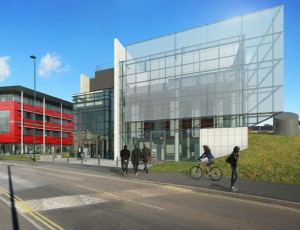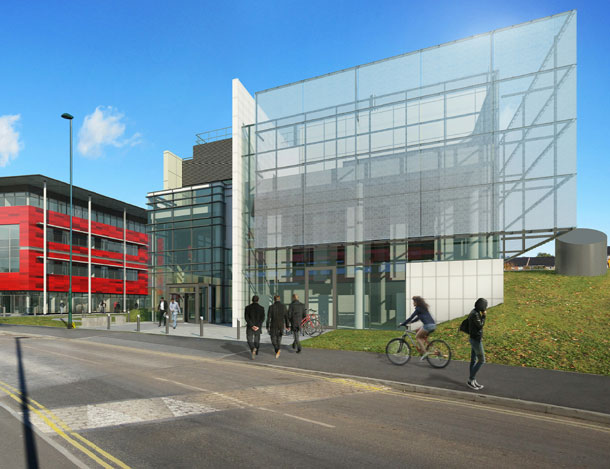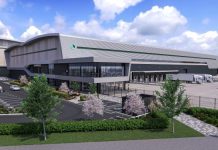 Students are enjoying a pioneering new £7 million low carbon building which has been completed by Clegg Construction.
Students are enjoying a pioneering new £7 million low carbon building which has been completed by Clegg Construction.
The Energy Technologies Building (ETB) at the University of Nottingham‘s Jubilee Campus is dedicated to research, design and development in sustainable energy technologies. The innovative new construction showcases the latest in sustainable energy features and building materials.
Located within the university’s Innovation Park, it takes Nottingham a step closer to meeting the government’s target for all new public buildings to be ‘zero carbon’ by 2018.
Simon Blackburn, managing director of Clegg Construction, said: “We are proud and pleased to have been involved in creating such a low carbon structure on behalf of the University of Nottingham.
“The work undertaken at ETB will have a strong influence on how buildings are constructed in the future so it was important this showcase building reflected those aims and was as environmentally friendly as possible.”
Comprising three distinct elements, the facility includes an exhibition area, a rooftop laboratory zone and an external technology area for energy testing.
The building’s design and its many energy efficient features minimise demand for heating, cooling, lighting and ventilation.
They include solar thermal devices for water heating, a smart energy management system, energy storage devices and a micro biomass combined heat and power unit. There is also a hydrogen refuelling station for hydrogen vehicles.
ETB – which is planning to achieve a BREEAM Outstanding rating – produces more energy than it needs so the surplus is being used to heat the neighbouring Institute of Mental Health building.
The office, event and exhibition space houses staff, hosts workshops and information events and showcases the building and its facilities. A variety of energy research projects, development and demonstrations will take place in the extensive, well-equipped laboratories. There is also a Prototype Hall featuring an external compound for constructing and testing full-scale prototypes of facades and buildings fabrics.



















